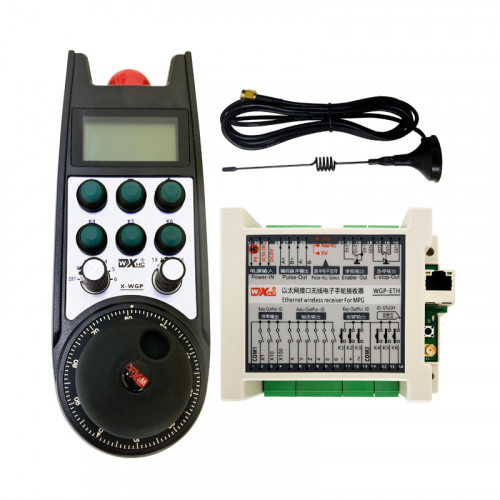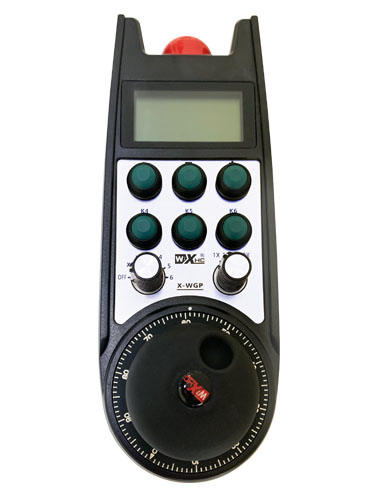Fakamatala
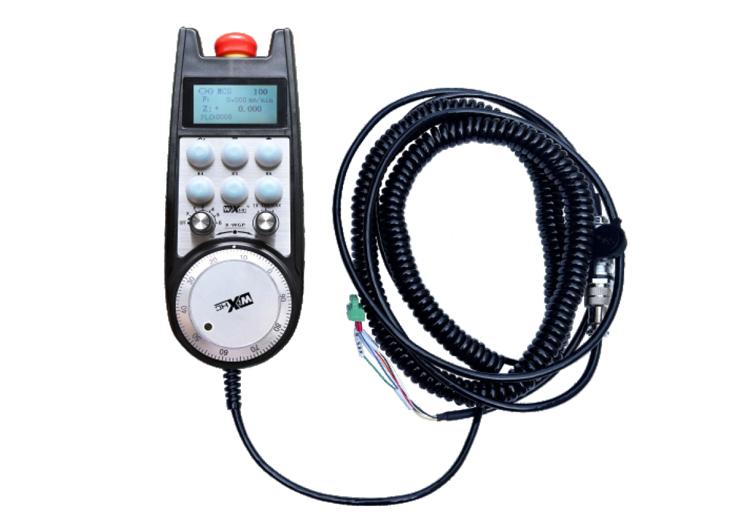
1. Koloa Fakafe'iloaki
Electronic handwheel is used for manual guidance, tu'unga, me'angaue fakatonutonu, mo e ngaahi ngaue kehe 'i he ngaahi me'angaue 'o e misini CNC .. This model of electronic handwheel is a Siemens actual display wired electronic handwheel. The handwheel is connected to the X130 interface of the Siemens system through a network cable, and the system coordinates are read and displayed on the LCD screen of the handwheel through S7 protocol communication. The handwheel can also control system axis selection, fakalahi; fakalahi; fakalahi, buttons, andother signals through communication.
2.Ngaahi me'a ngaue 'o e koloa .
1. Use a 6-core aviation plug cable for connection, with a handwheel cable length of 10 mita.
2. The handwheel screen can display system workpiece coordinates, mechanical coordinates,feed rate, fili 'o e axis, fakalahi; fakalahi; fakalahi, and other information.
3. Poupou'i 'a e button tu'u fakavavevave ., faka'ilonga'i 'a e faka'ilonga IO ., and the hand wheel shutdown emergency stop is still valid.
4. Poupou 6 ngaahi pātene angamaheni, switch IO signals, and can output signals to the system through IO wiring or communication.
5. Poupou 6 pē 8 pule'i 'o e 'asi, with switch IO signals that can be output to the system through IO wiring or communication.
6. Poupou 3 pē 4 levels of magnification control, with switch IO signals that can be output to the system through IO wiring or communication.
7. Poupou'i 'a e pulse encoder, 100 pulses/turn, can output signals to the system through AB pulse wiring.
8. Supports Siemens S7 protocol and Siemens 828D, 840DSL, ONE and other model systems.
3. Ngaahi fakaikiiki 'o e koloa
| Handwheel working power supply voltage |
DC24V/1A |
| Ma'u 'o e ma'u'anga ivi ma'u . |
DC24V/1A |
| Receiver IO output load range |
DC24V |
| Hand wheel end cable length |
10m |
| Receiver end cable length |
1m |
| Receiver end network cable length |
3m |
| Operating temperature |
-25°C<X<55°C |
| Anti-fall height |
1m |
| Custom Button Quantity |
6 |
| Product dimensions |
233*90.7*77.4(mm) |
4.fakafe'iloaki 'o e ngaue 'a e koloa .
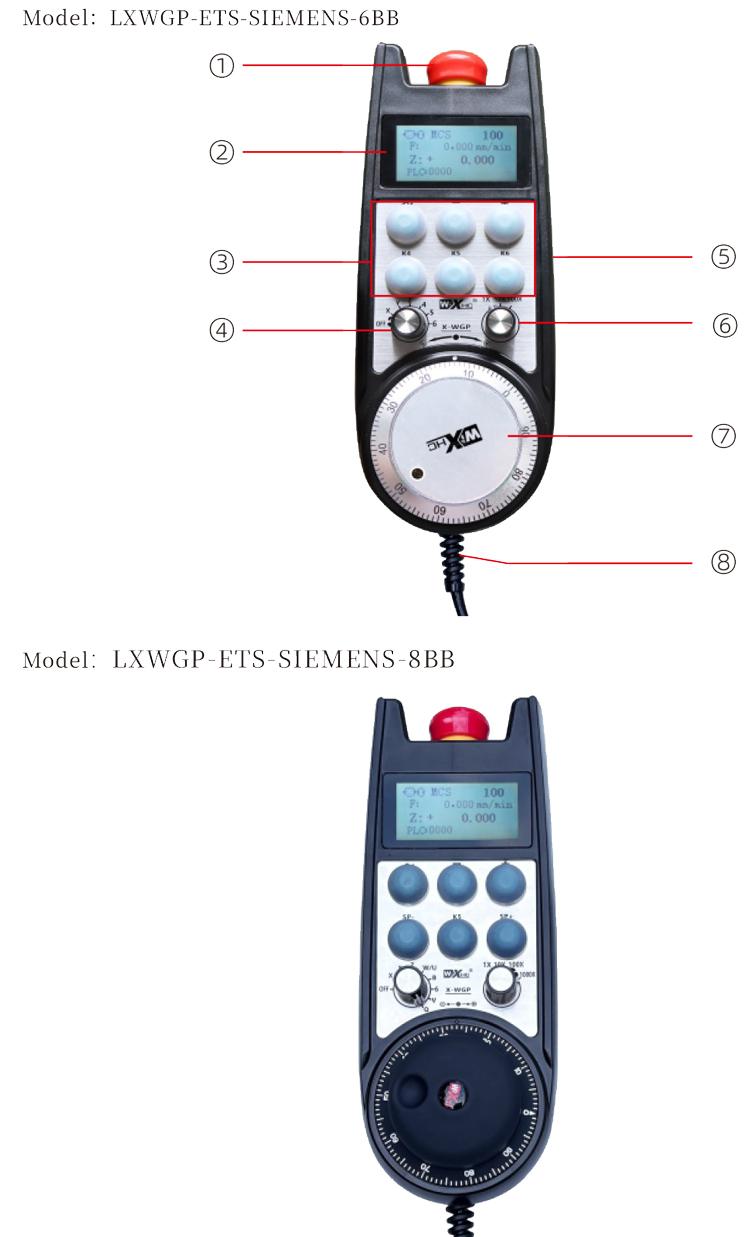
Tohi'i:
Emergency stop button:
Lomiʻi ʻa e pātene tuʻu fakavavevave ., pea 'e motuhi 'a e ongo seti 'o e ngaahi outputs IO 'i he me'a tali ., pea ko e ngaahi ngaue kotoa pe 'o e handheel 'e fakata'e'aonga'i ..
After releasing the emergency stop, the emergency stop IO output on the receiver is closed, and all functions of the handwheel are restored.
② Screen display:
PLC: 0000 indicates that the network cable is not connected, PLC: 1010 indicates that the network cable is successfully connected to the PLC system.
PLC: 1110 represents successful writing of system data to the handwheel, PLC: 0001 represents successful connection to the computer.
③ Custom button:
6 ngaahi pātene angamaheni, takitaha 'oku fe'unga mo ha poini output 'o e IO 'i he receiver ., also connected to the system through communication.
④ Axis selection switch:
The axis selection switch can switch the movement axis controlled by the handwheel.
⑤ Enable button:
Press and hold either enable button on both sides to activate the pulse encoder by shaking it. And the two groups on the receiver enable IO output to conduct, release the enable button to enable IO output to disconnect.
⑥ Magnification switch:The magnification switch can switch the magnification
controlled by the handwheel.
⑦ Pulse encoder:
Lomiʻi mo pukepuke ʻa e pātene fakaʻatā ., luluʻi ʻa e encoder pulse ., tukuange mai ha fakaʻilonga pulse ., and control the movement of the machine axis.
⑧ Handwheel cable:
Cable connecting the handwheel and receiver, aviation plug, used for handwheel power supply and communication.
5. Fakatata 'o e koloa 'o e koloa
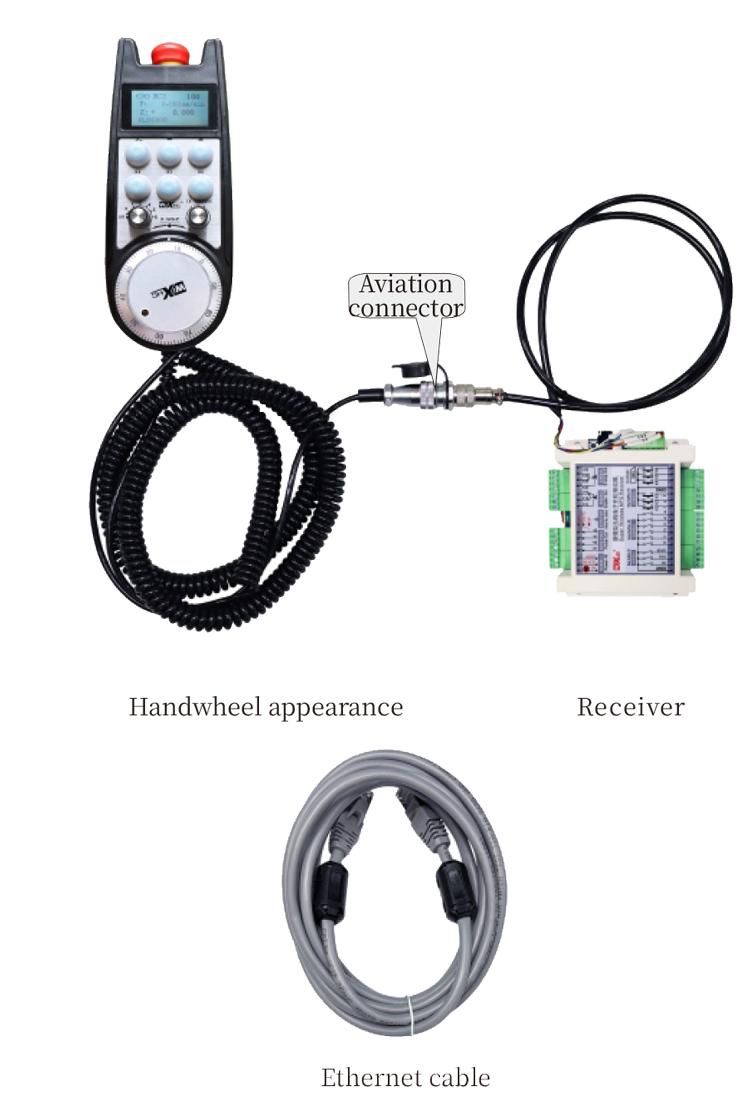
6. Fakahinohino ki hono fokotu'u 'o e koloa
6.1 Ngaahi sitepu fokotu'u 'o e koloa
1. Install the receiver into the electrical cabinet through the screw holes at the four corners.
2. Vakai ki he'emau fakatata 'o e uaea 'o e receiver pea fakafehoanaki ia mo ho'o ngaahi me'angaue 'i he feitu'u .. Connect the device to the receiver through cables and connect the receiver to the X130 interface of the system using Ethernet cables.
3. Hili hono fakaleleiʻi ʻo e meʻa tali ., install the aviation plug base at the handwheel opening position on the panel, and plug the other end of the base into the handwheel interface on the receiver. Then insert the aviation plug of the handwheel cable into the base and tighten the fixing device.
6.2 Ngaahi tafa'aki fokotu'u 'o e ma'u .
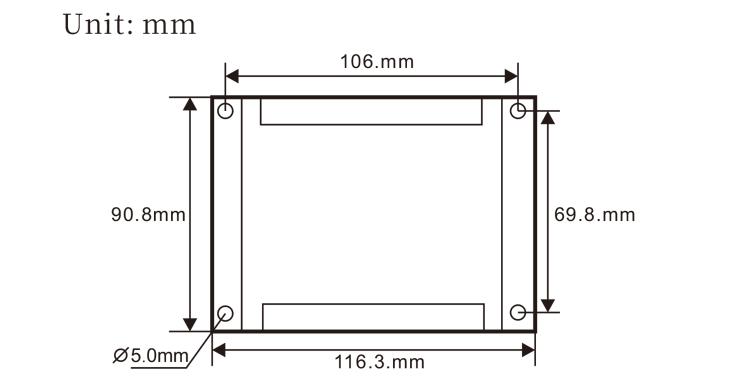
6.3 Installation dimensions of aviation plugs

6.4 Fakatata 'o e Fakafepaki 'o e uaea 'o e ma'u .
 7.Ngaahi Fakahinohino ki he Ngaue 'o e Koloa
7.Ngaahi Fakahinohino ki he Ngaue 'o e Koloa
1. When the receiver is powered on and the working indicator light of the receiver flashes, connect the receiver to the computer with a network cable, set the fixed IP address of the computer, and use the network configuration tool software to set the network parameters of the handwheel function. For specific setting methods, refer to the “LXWGP-ETS Wired Handwheel User Manual”.
2.After the receiver is set up, the system needs to program a PLC program. Please refer to the “LXWGP-ETS Different Siemens Numerical Control System Setting Methods” and PLC program routine materials for details.
3.After completing the above settings, take the receiver to the machine electrical cabinet and install it. Pull out the network cable from the computer and plug it into the X130 interface of the system.Connect the receiver power supply and pulse line.3.
4.After completing the above settings, take the receiver to the machine electrical cabinet and install it. Pull out the network cable from the computer and plug it into the X interface of the system. Connect the receiver power supply and pulse line.
5. Select axis selection: Switch the axis selection switch and select the axis you want to operate on.
6. Fili ʻa e fakalahi: Switch the magnification switch and select the magnification level you need.
7. Axis 'oku nga'unu: Lomiʻi mo pukepuke ʻa e pātene fakaʻatā ., fili 'a e 'axis fili 'o e switch ., fili 'a e switch fakalahi ., and then rotate the pulse encoder to rotate the positive moving axis clockwise and the negative moving axis counterclockwise.
8. Press and hold any custom button to turn on the IO output of the corresponding button in the receiver, and release the button to turn off the output.
9. Lomiʻi ʻa e pātene tuʻu fakavavevave ., 'e motuhi 'a e tu'u fakavavevave fe'unga 'a e IO output 'o e receiver ., 'e fakata'e'aonga'i 'a e ngaue 'a e handheel ., tukuange mai ʻa e foʻi pātene tuʻu fakavavevavé ., 'e tapuni 'a e tu'u fakavavevave IO output ., pea 'e toe fakafoki mai 'a e ngaue 'a e handheel ..
8.Koloa Model Fakamatala .

① LXWGP represents a wired appearance style, and the receiver communication interface
is an Ethernet interface.
② : Represents Siemens system specific.
③ : represents the number of axis selection switches, represents axes, and represents
ngaahi toki.
④ : represents the type of axis selection and magnification signal, A represents
point-to-point output signal, pea 'oku fakafofonga'i 'e B 'a e faka'ilonga output encoded ..

9.Product trouble shooting

10.Tauhi
1. Kataki 'o ngaue'aki ia 'i ha 'atakai momoko 'i he mafana 'o e loki mo e 'omi ke fakaloloa 'ene mo'ui 'i he ngaue ..
2. Kataki 'o faka'ehi'ehi mei hono ngaue'aki 'i he ngaahi 'atakai 'oku 'ikai angamaheni hange ko e 'uha mo e ngaahi pupula vai ke fakaloloa 'a e mo'ui 'o e ngaue ..
3. Kataki 'o tauhi 'a e fōtunga 'o e handheel ma'a ke fakaloloa 'ene mo'ui 'i he ngaue ..
4. Kataki 'o faka'ehi'ehi mei he squeezing, hinga, bumping, mo e ngaahi me'a pehē. ke ta'ofi 'a e maumau ki he ngaahi konga tonu 'i loto 'i he handwheel pe ngaahi fehalaaki tonu ..
5. Kapau 'oku 'ikai ke ngaue'aki 'i ha taimi loloa ., please store the handwheel in a clean and safe place.During storage and transportation, 'oku totonu ke tokanga ki he moisture mo e 'ohovale 'a e fakafepaki ..
11. Fakamatala ki he Malu
1. Kataki 'o lau fakalelei 'a e ngaahi fakahinohino kimu'a pea toki ngaue'aki pea tapui 'a e kau mataotao 'oku nau ngaue ..
2. If any abnormal situation occurs with the handwheel, please stop using it immediately and troubleshoot. Before troubleshooting, it is forbidden to use the faulty handwheel again to avoid safety accidents caused by unknown handwheel faults;
3. Kapau 'oku fiema'u ke fakalelei'i ., Kataki 'o fetu'utaki ki he kautaha ngaohi .. Kapau 'oku tupu 'a e maumau 'i he fakalelei'i 'o e ., 'e 'ikai ke 'oatu 'e he kautaha ngaohi 'a e warranty .






 7.Ngaahi Fakahinohino ki he Ngaue 'o e Koloa
7.Ngaahi Fakahinohino ki he Ngaue 'o e Koloa







